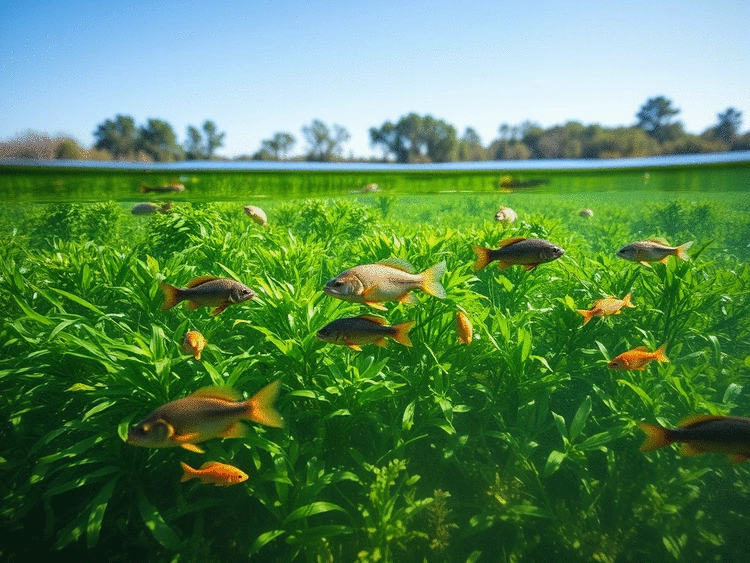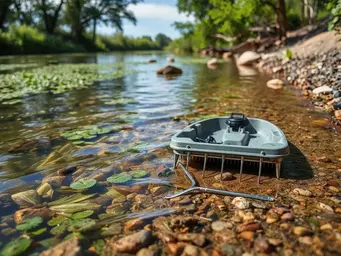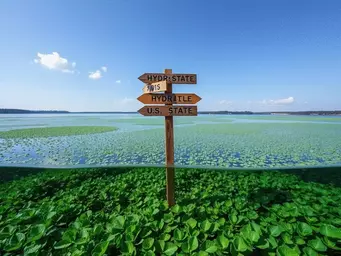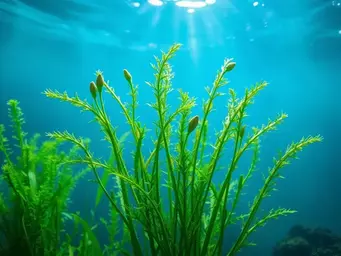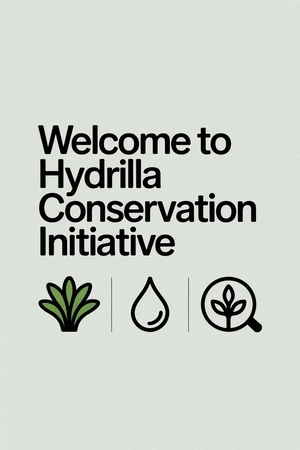In the murky depths of our waterways, an aquatic invader known as hydrilla is wreaking havoc on local ecosystems. With its rapid growth and aggressive nature, this invasive plant poses serious challenges to biodiversity and water quality. What can we learn about its impact and how to manage it effectively?
What You Will Learn
- Hydrilla can grow up to one inch per day, creating dense mats that block sunlight and deplete oxygen in water bodies.
- The species spreads rapidly through fragmentation; each fragment can potentially sprout a new plant, making control difficult.
- Hydrilla significantly reduces biodiversity by outcompeting native aquatic plants, altering food webs and habitats.
- This invasive plant negatively affects water quality, leading to murkier waters and decreased dissolved oxygen levels critical for aquatic life.
- Hydrilla can also have economic repercussions, resulting in increased treatment costs and declines in local fisheries and recreational opportunities.
- Despite its negative effects, hydrilla can provide habitat and food for certain wildlife, highlighting the need for balanced management strategies.
- Community engagement and education are essential in combating hydrilla infestations and promoting sustainable management practices.
The Dual Impact of Hydrilla: Ecological & Economic Ripple Effects
Hydrilla's presence creates a complex web of ecological disruptions and significant economic burdens in affected communities.
Hydrilla's Ecological Impact: A Threat to Biodiversity
Hydrilla rapidly disrupts native ecosystems, leading to:
- ✓ Reduced Biodiversity
- ✓ Altered Habitats
- ✓ Water Quality Deterioration
- ✓ Oxygen Depletion
Key Economic Consequences
- ● Increased Treatment Costs (Millions Annually)
- ● Decline in Fishing Revenue
Broader Social Impacts
- ● Poor Water Quality (Community Health)
- ● Loss of Recreational Opportunities
Understanding Hydrilla and Its Ecological Role
In the world of aquatic plants, Hydrilla verticillata stands out as a major player, often for the wrong reasons. Known for its rapid growth and ability to thrive in various water conditions, hydrilla is considered an invasive species. But what does that really mean for our ecosystems? To understand its impact, we must first explore the characteristics that make this plant a threat to native flora and fauna.
Hydrilla can grow up to an astonishing one inch per day, creating dense mats that block sunlight and deplete oxygen in our waters. This overwhelming growth can disrupt the balance of native species, leading to significant ecological consequences. Have you ever encountered hydrilla in your local waterway? If so, you might have seen its lush green foliage choking out the sunlight that native plants depend on!
What Is Hydrilla verticillata and Why Is It Considered Invasive?
Hydrilla verticillata is a freshwater plant native to parts of Asia and Africa, but it has become infamous in North America. This plant spreads rapidly through fragments and tubers, making it difficult to control. Its ability to thrive in a wide range of conditions is a key reason it's labeled as invasive, and it often outcompetes native plants for resources.
- Rapid Growth: Hydrilla can dominate aquatic environments in a short time.
- Fragmentation: Each piece can sprout a new plant, leading to exponential spread.
- Survival Tactics: It can live in both still and flowing waters, adapting easily to its surroundings.
Understanding hydrilla's invasive nature is crucial as we work towards managing its impact on our ecosystems. The more we know, the better equipped we are to combat its spread effectively.
The Ecological Effects of Hydrilla on Native Aquatic Plants and Biodiversity
Hydrilla's presence can have devastating effects on local biodiversity. As it proliferates, it creates a habitat that favors its own growth while displacing native aquatic plants. This disruption can alter food webs, impacting species that rely on native vegetation for shelter and sustenance. For example, the U.S. Fish and Wildlife Service highlights the need for rapid response plans to manage hydrilla in areas like Massachusetts, emphasizing its threat to native ecosystems.
- Reduced Biodiversity: Native species struggle to compete with hydrilla, leading to declines.
- Altered Habitats: The dense mats of hydrilla can suffocate beneficial plants.
- Impacts on Wildlife: Species such as fish, birds, and invertebrates may face habitat loss, leading to population declines.
Ultimately, the ecological ripple effects of hydrilla can reshape entire ecosystems, making it essential for us to recognize and address these challenges.
How Hydrilla Influences Water Quality, Clarity, and Oxygen Levels
Another significant aspect of hydrilla's impact is its effect on water quality. The dense mats created by this invasive plant can block sunlight, reducing photosynthesis in native plants and affecting overall aquatic productivity. Plus, hydrilla can contribute to the decline of dissolved oxygen levels, which is crucial for fish and other aquatic organisms' survival. Studies have shown that invasive aquatic plants inflict high economic damage worldwide, often tied to their impact on water quality and ecosystem services.
- Clarity Reduction: Hydrilla leads to murkier waters, which can impact recreational activities.
- Oxygen Depletion: As hydrilla decays, it consumes dissolved oxygen, harming fish populations.
- Water Quality Deterioration: The imbalance in plant life can lead to algal blooms, further degrading the ecosystem.
These water quality issues highlight the critical need for effective management practices to mitigate hydrilla’s spread and protect our waterways. Have you noticed any changes in your local water quality due to hydrilla?
The Relationship Between Hydrilla and Aquatic Ecosystems: Balancing Ecological Functions
Despite its many negative effects, hydrilla does play a role in the ecosystem. In certain contexts, it can provide habitat and food for some wildlife. However, this balance is delicate and often tips towards ecological harm.
- Habitat Provision: Some fish and invertebrates utilize hydrilla as shelter.
- Food Source: Certain herbivorous species may rely on hydrilla for nourishment.
- Shading Effects: Hydrilla can create shaded areas that benefit specific aquatic organisms.
Ultimately, understanding the complex relationship between hydrilla and aquatic ecosystems allows us to formulate better management strategies. As I always say, knowledge is power in the fight against invasive species!
We Want to Hear From You!
What do you think about the impact of hydrilla on local ecosystems? Have you noticed changes in your own waterways? Share your thoughts below:
Frequently Asked Questions About Hydrilla
- What is Hydrilla verticillata?
- Hydrilla verticillata is an invasive freshwater plant, originally from Asia and Africa, known for its rapid growth and ability to thrive in diverse aquatic environments.
- Why is hydrilla considered an invasive species?
- It is considered invasive due to its rapid growth (up to one inch per day), its ability to spread quickly through fragmentation, and its capacity to outcompete native aquatic plants for resources, leading to ecological disruption.
- How does hydrilla affect biodiversity?
- Hydrilla reduces biodiversity by displacing native plant species, altering natural habitats, and disrupting food webs, which can lead to declines in fish, bird, and invertebrate populations that rely on native vegetation.
- What are the impacts of hydrilla on water quality?
- Dense mats of hydrilla block sunlight, reduce photosynthesis in native plants, and deplete dissolved oxygen levels, which are critical for aquatic life. It also contributes to murkier waters and can foster algal blooms.
- What are the economic consequences of hydrilla infestation?
- Economic impacts include high treatment and management costs for communities, reduced fishing revenue due to declining fish populations, loss of recreational opportunities (boating, fishing), and potential decreases in property values.
- Can hydrilla have any positive ecological roles?
- While primarily detrimental, hydrilla can, in some contexts, provide limited habitat and food for certain wildlife. However, these benefits are often outweighed by its negative ecological impacts.
- How important is community engagement in managing hydrilla?
- Community engagement and education are crucial for effective hydrilla management. Collaboration among residents, environmental professionals, and educators can foster stewardship, promote conservation efforts, and help mitigate social and economic impacts.
Summary of Hydrilla's Economic and Ecological Effects
As we've explored, hydrilla's presence in our waterways creates a ripple effect, impacting not only the ecosystems but also the economic foundations of local communities. The financial burden associated with controlling this invasive species can be staggering, as municipalities grapple with the costs of treatment and management. In fact, reports indicate that communities spend millions each year on strategies to curb hydrilla's growth. This situation makes it crucial to understand the economic consequences of hydrilla infestation on both local ecosystems and fisheries.
Recap of Key Economic Consequences on Local Ecosystems and Fisheries
The economic implications of hydrilla extend beyond mere management costs. When we look closely, we can identify several key areas where local economies feel the pinch:
- Increased Treatment Costs: Communities often allocate significant budgets to control invasive species, including hydrilla. The U.S. Army Corps of Engineers provides valuable insights into herbicide outreach meetings, highlighting ongoing efforts and costs associated with managing hydrilla in waterways like the Connecticut River.
- Decline in Fishing Revenue: Fishermen face challenges as native fish populations struggle, leading to decreased catches.
- Loss of Recreational Opportunities: High densities of hydrilla can deter boating and fishing, impacting local tourism.
- Impact on Property Values: Areas with hydrilla infestations often see a decline in property values due to aesthetic and ecological concerns.
Addressing these financial burdens requires proactive approaches to management and community involvement. By educating local stakeholders on the implications of hydrilla and engaging them in solutions, we can mitigate some of these economic pressures.
Understanding the Broader Social Impacts of Hydrilla Infestation and Community Engagement
Beyond the financial aspects, hydrilla infestation also carries profound social impacts. Communities often find themselves divided on how to tackle this complex issue, which can hinder collaborative efforts. It's important to consider the following:
- Community Health: Poor water quality associated with invasive species can directly affect public health.
- Social Cohesion: Disputes over management strategies can lead to a lack of unity among local stakeholders.
- Environmental Education: Increased awareness and understanding of hydrilla can foster community stewardship and engagement in conservation efforts.
This engagement is vital! By fostering collaboration among residents, environmental professionals, and educators, we can create a well-informed community prepared to tackle the challenges posed by hydrilla. Through initiatives by the Hydrilla Conservation Initiative, we can provide essential resources that promote understanding and action.
Recap of Key Points
Here is a quick recap of the important points discussed in the article:
- Invasive Nature: Hydrilla verticillata grows rapidly and outcompetes native species, leading to significant ecological disruptions.
- Ecological Consequences: Its dense mats reduce biodiversity, alter habitats, and affect wildlife populations by displacing native plants.
- Water Quality Impact: Hydrilla can decrease water clarity and oxygen levels, leading to negative effects on aquatic life.
- Economic Burden: Communities face high costs for treatment, loss of fishing revenue, and reduced recreational opportunities due to hydrilla infestations.
- Community Engagement: Addressing hydrilla requires collaboration and education among stakeholders to foster effective management strategies.
